

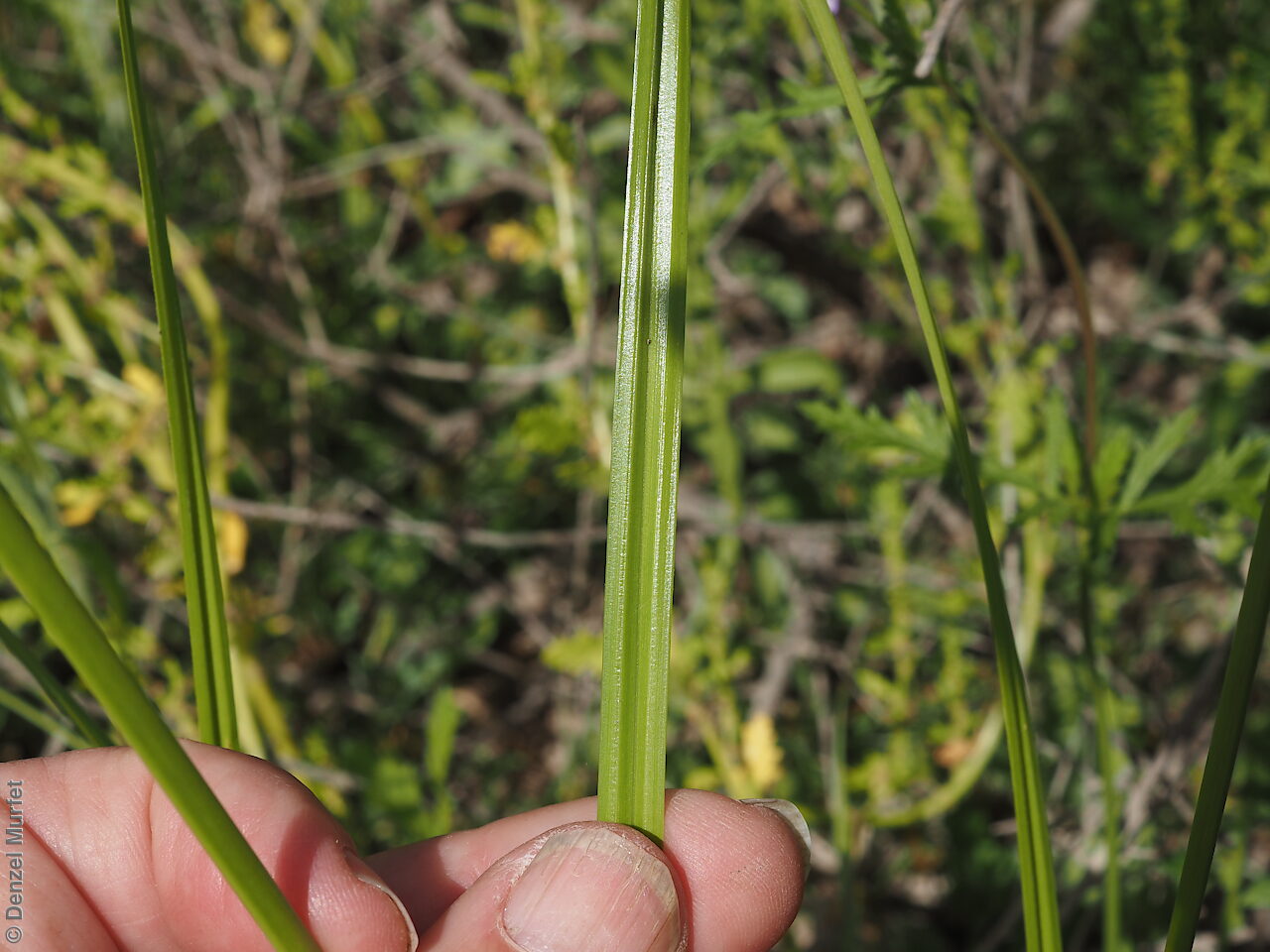
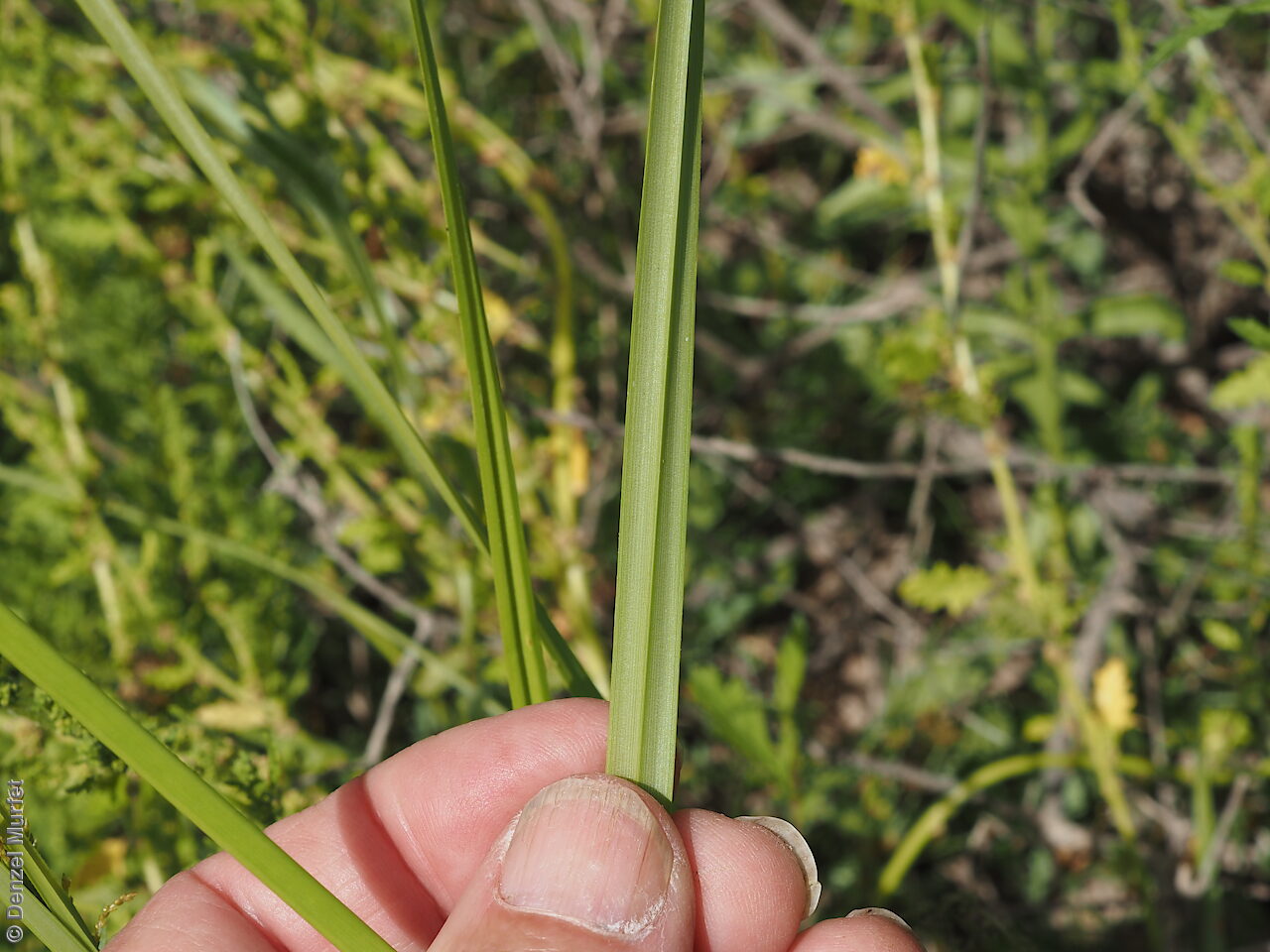
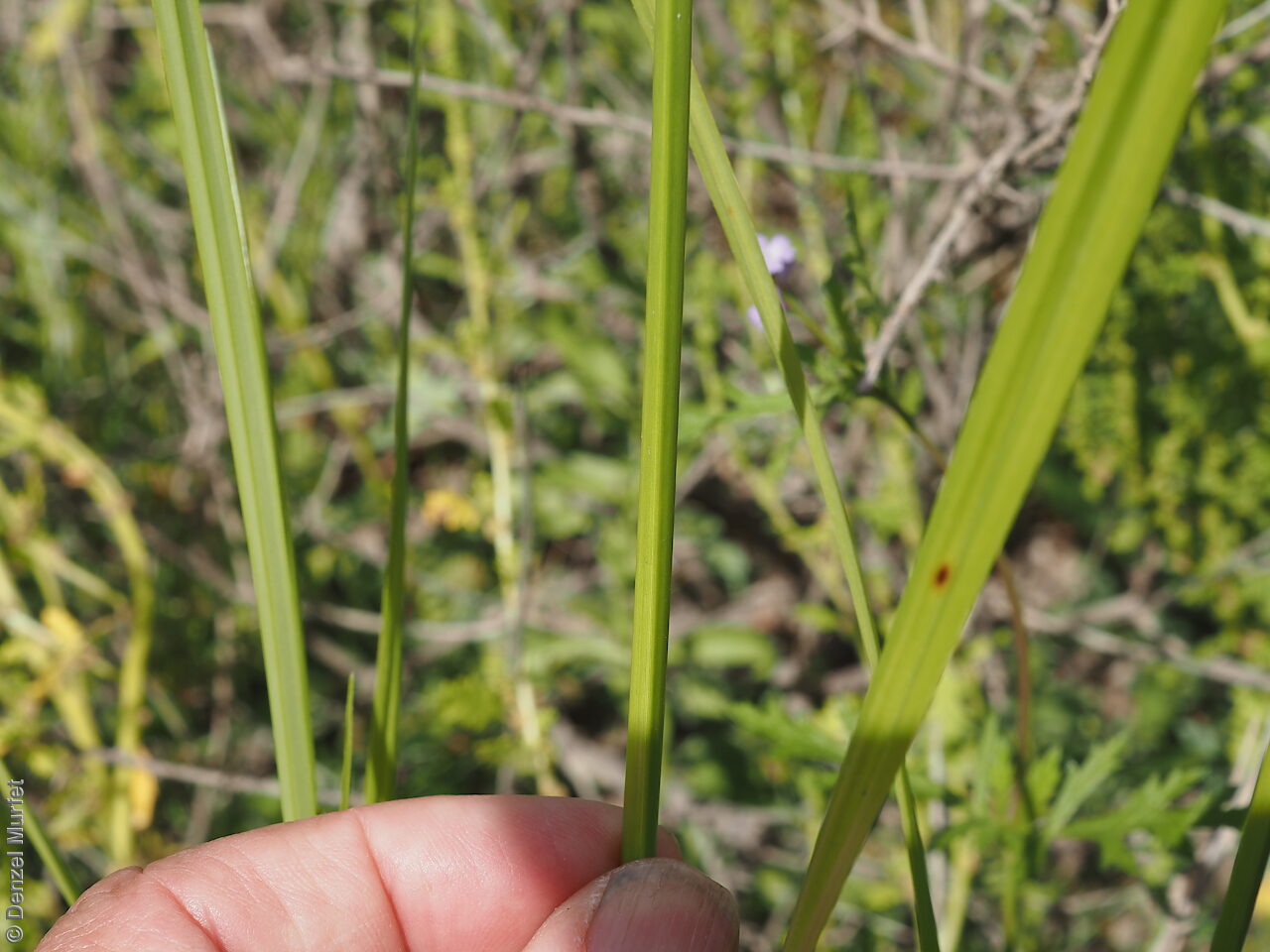
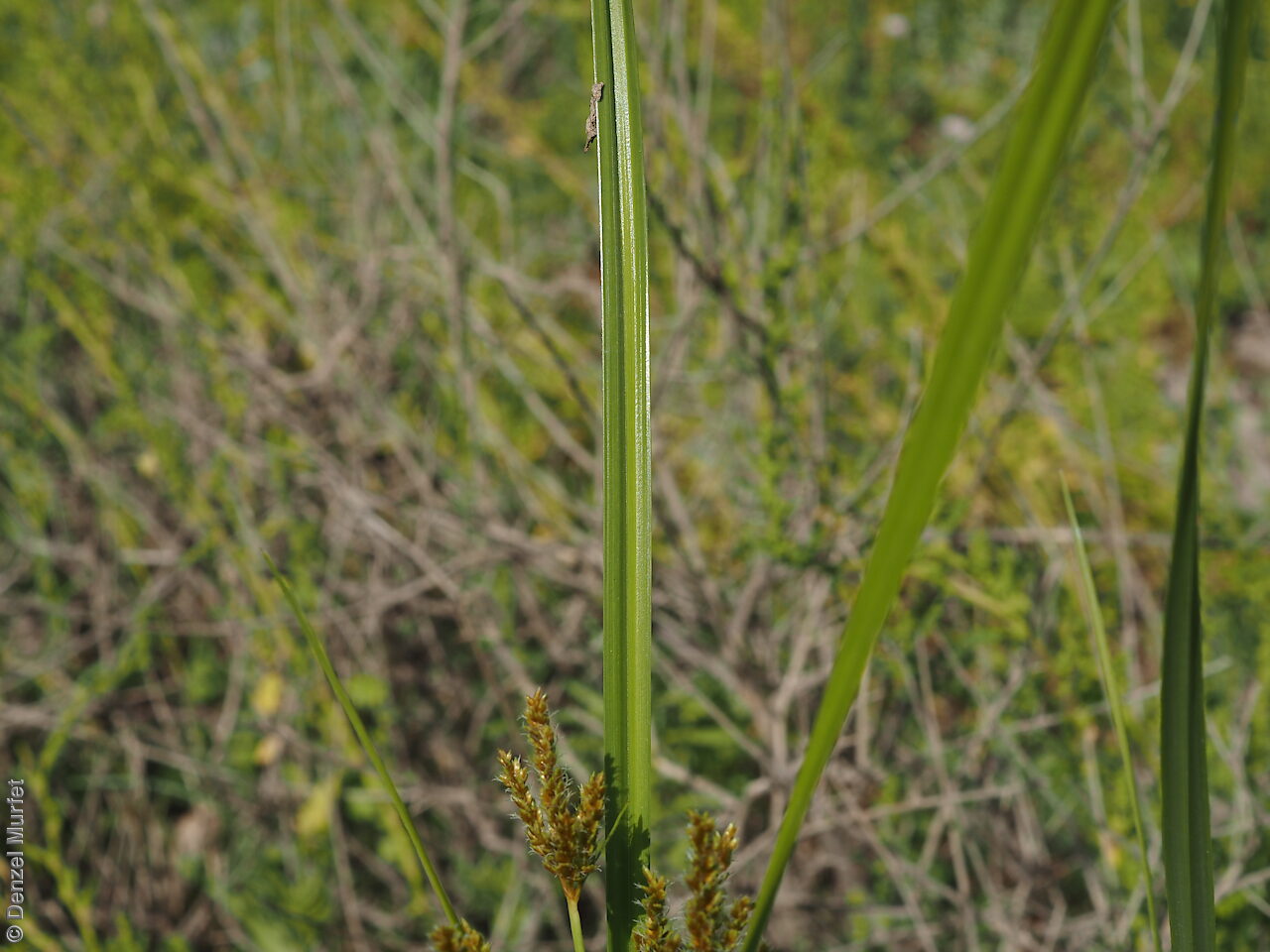
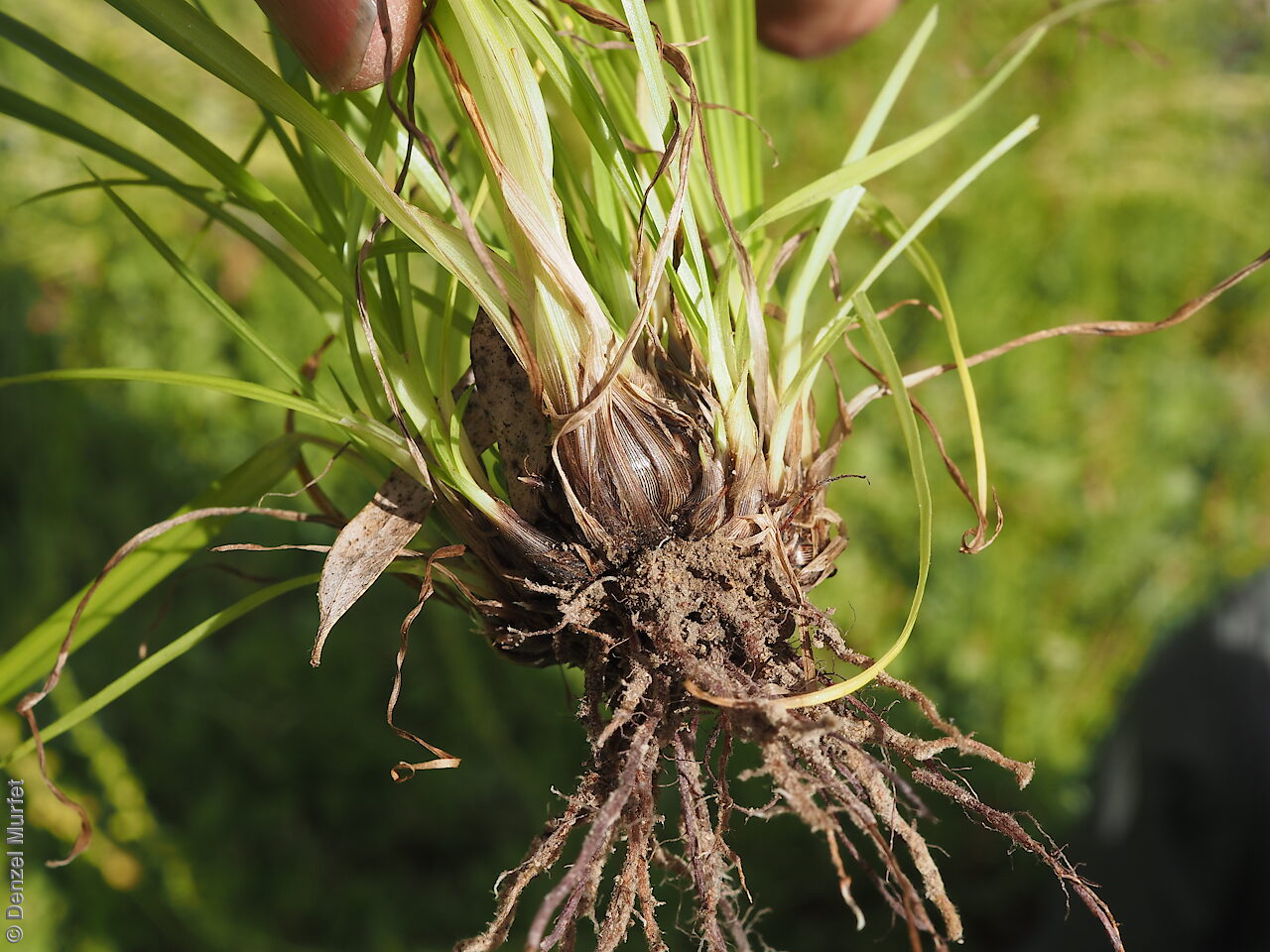
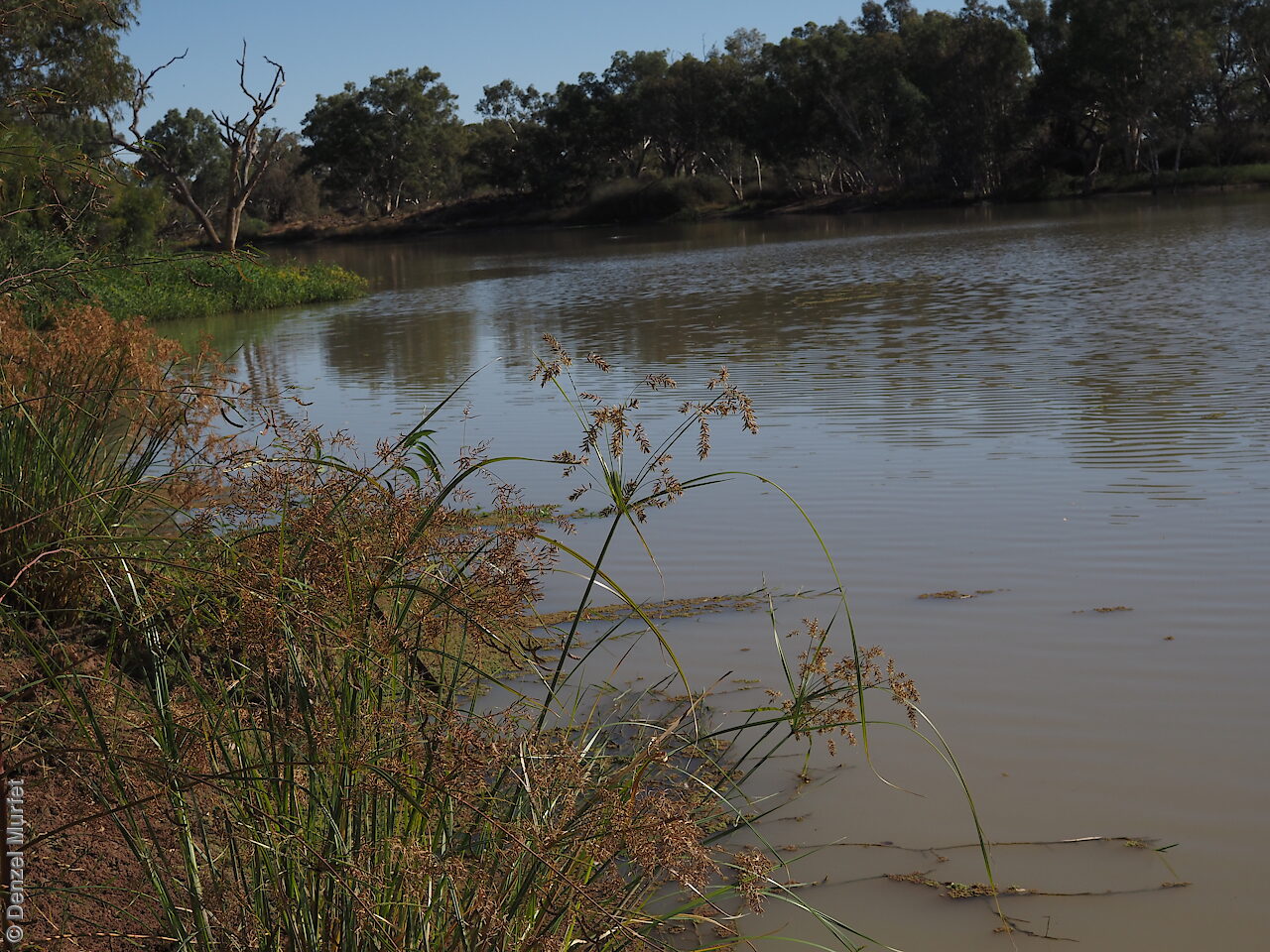
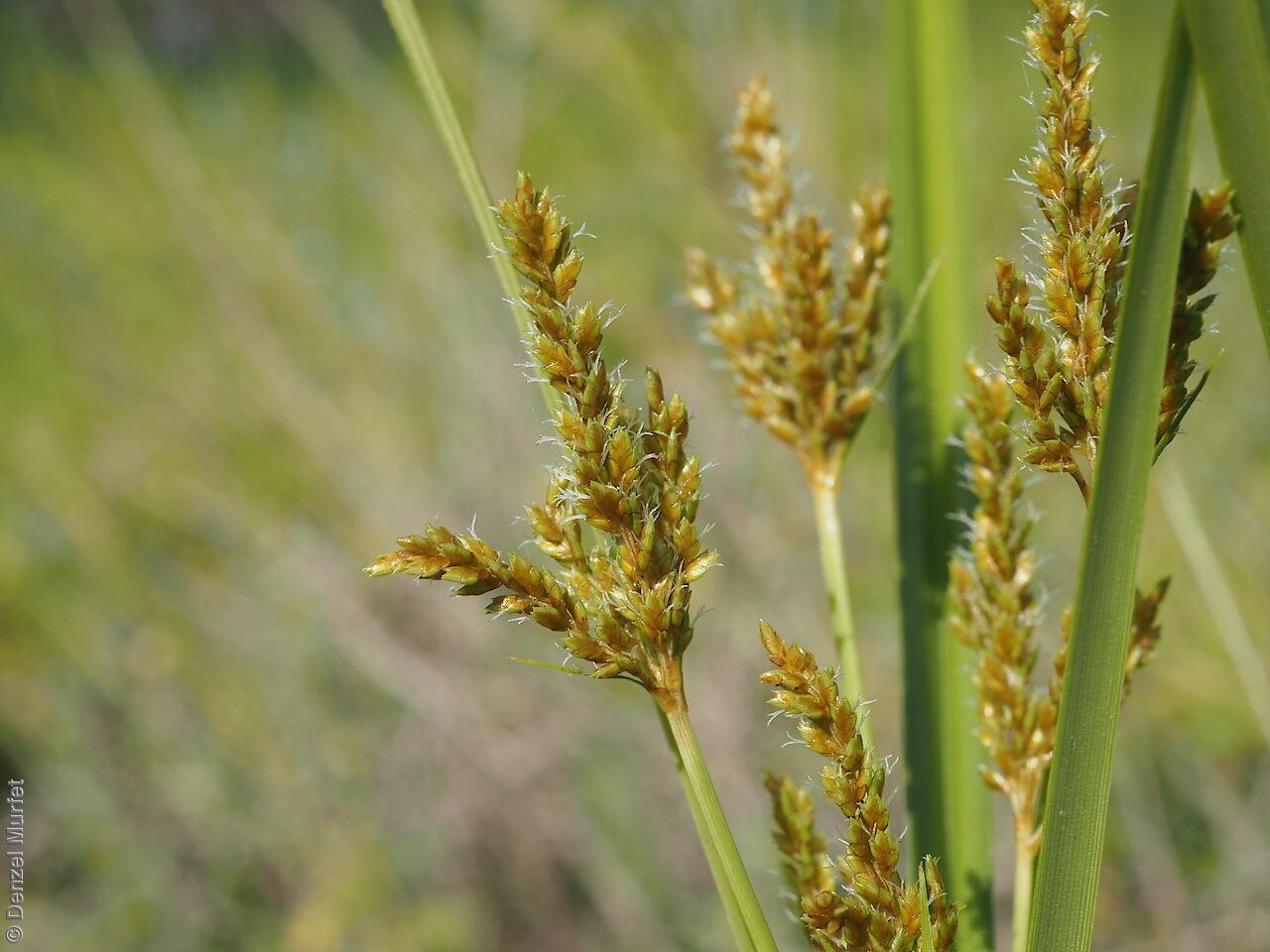
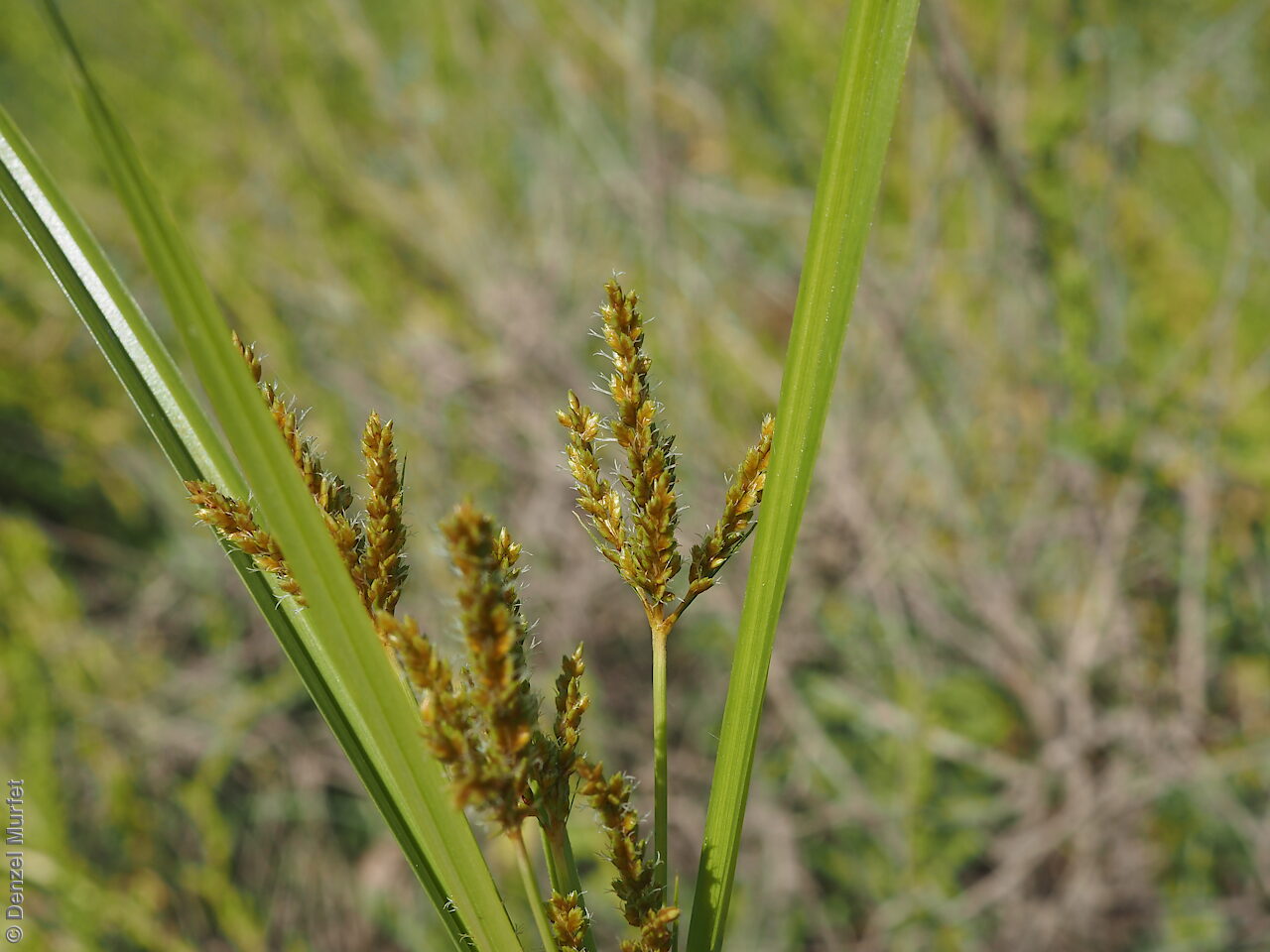
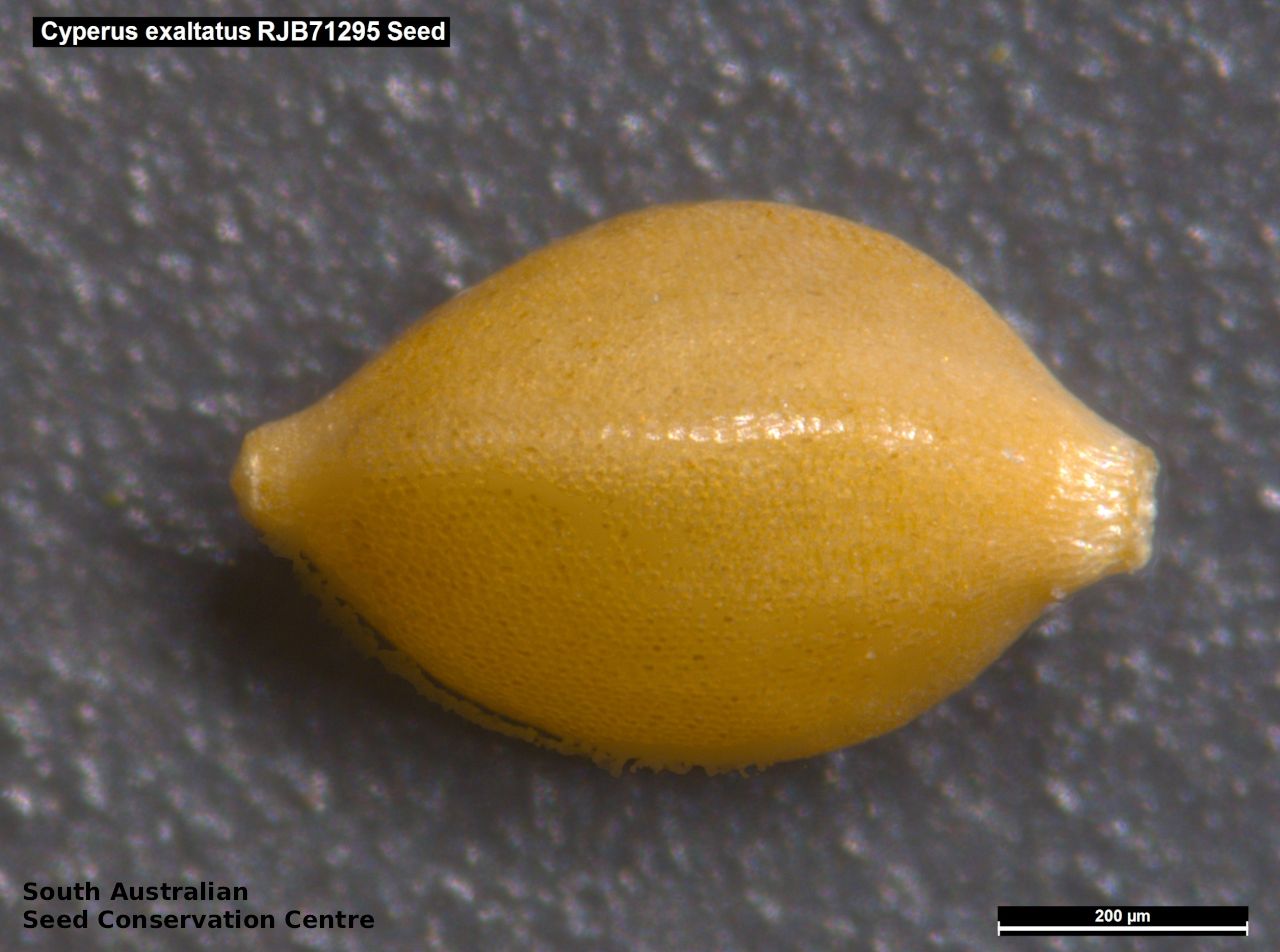
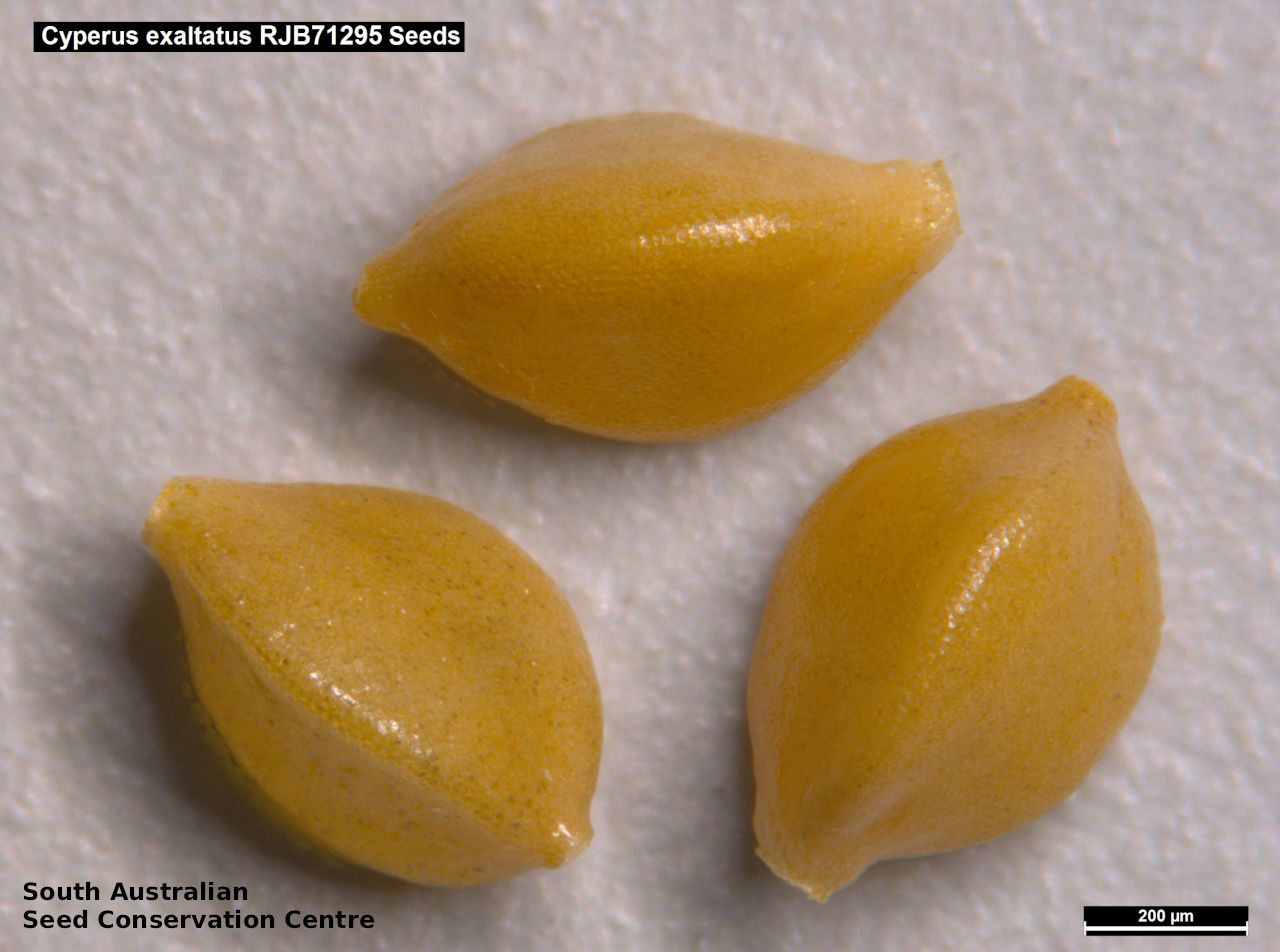
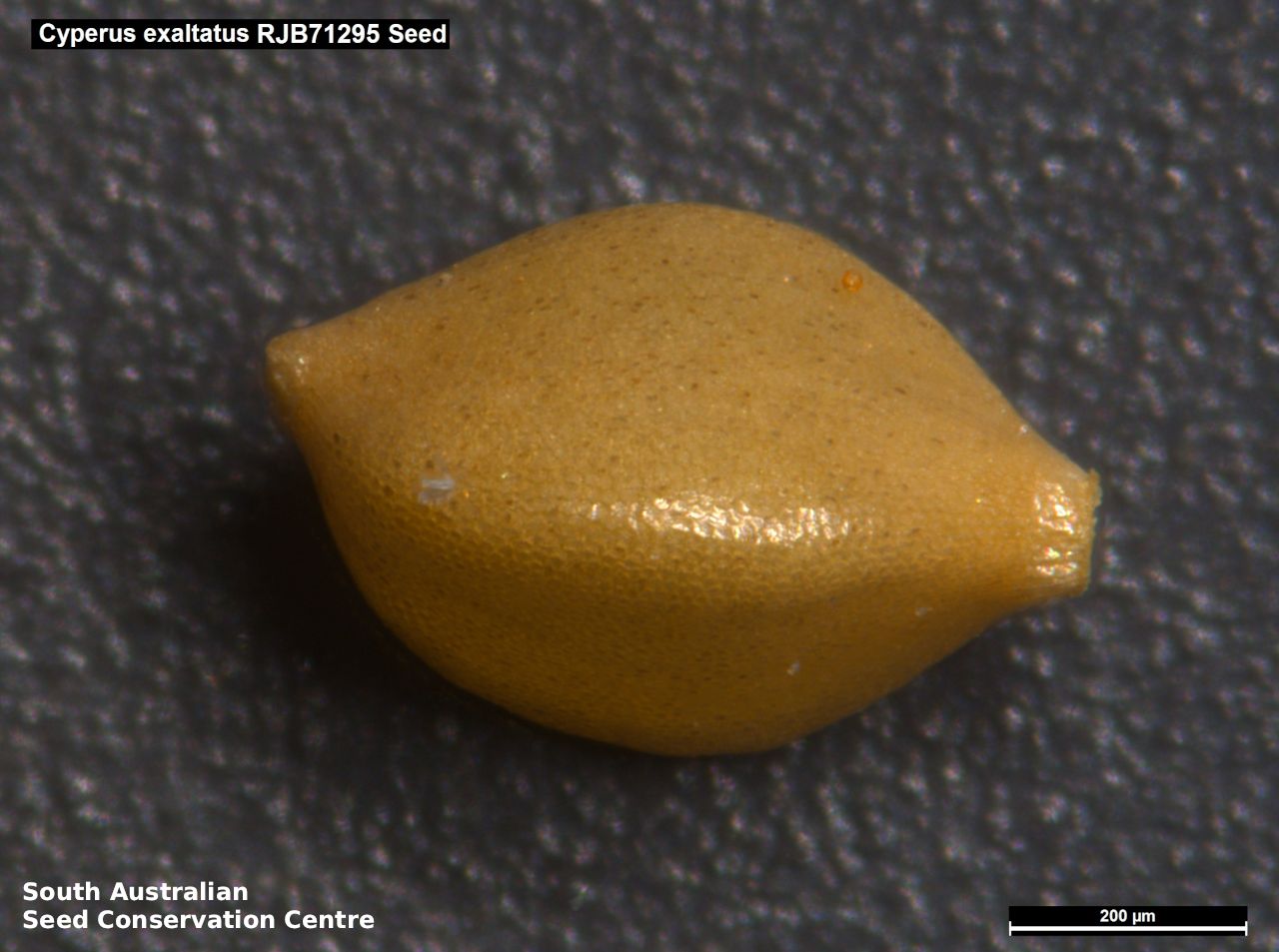


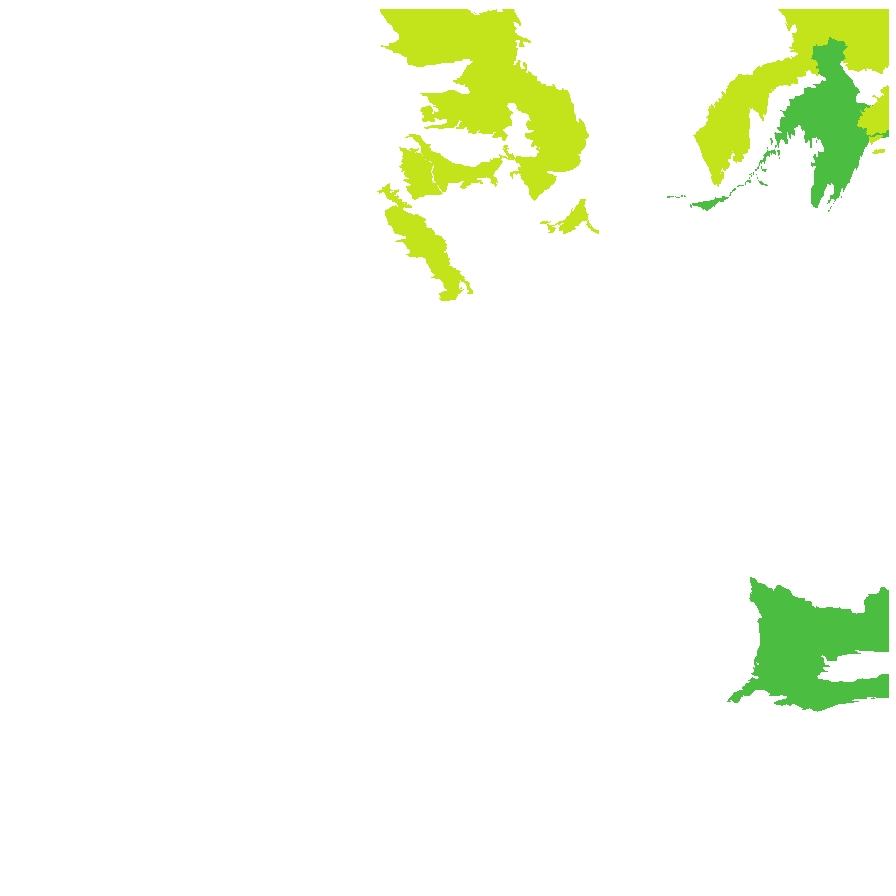
Botanical art
Prior names
Cyperus exaltatus var. minor
Common names
Tall Flat-sedge
Splendid Flat-sedge
Etymology
Cyperus from the Latin 'cyperos' and derived from the Greek 'kypeiros', an ancient Greek name used by Homer and Theophrastus for several plants of this genus. Exaltatus means very tall.
Distribution and status
Found in the north, north-east and murray regions of South Australia, growing in shallow water and on banks of streams and lagoons. Also found in Northern Territory, Queensland, New South Wales and Victoria. Native. Common in South Australia. Common in the other states.
Herbarium regions: North Western, Lake Eyre, Flinders Ranges, Murray, Southern Lofty, Green Adelaide
AVH map: SA distribution map (external link)
Plant description
Stout tufted perennial sedge to I m high. Stems triquetrous, to 3 mm thick at the top. Leaves about as long as the stem, 3-10 mm wide, bracts 3-6, like the leaves, serrulate on the edges, the lower ones much exceeding the inflorescence (to 80 cm long). Flower-spikes an umbel compound, with several spreading rays; spikelets rather densely arranged in oblong or linear spikes at the end of the rays and their branches a rich deep-brown to golden-brown, mostly linear, 20-40-flowered, to 15 mm long and 1.5 mm wide; rhachilla winged; glumes tightly packed, mucronate, keeled, 3-5-nerved on the back and nerveless on the sides, c. 1.5 mm long; style 3-fid. Flowers in spring and summer. Fruits are flat, golden fruit-head in dense clusters. Seeds are pale brown ovoid triangular seed to 0.7 mm long and 0.5 mm wide. Seed embryo type is capitate.
Seed collection and propagation
Collect seeds between November and April. Collect fruits by picking off the mature heads, those turning a golden colour and come-off easily. Place the heads in a tray and leave to dry for one to two weeks. Then rub the heads with a rubber bung to dislodge the seeds. Use a sieve to separate any unwanted material. Be careful, as the seeds are very small. Seeds are pale brown, ovoid and hard. Store the seeds with a desiccant such as dried silica beads or dry rice, in an air tight container in a cool and dry place. Seed viability can be low.
| Location | No. of seeds (weight grams) | Number of plants | Date collected | Collection number Collection location | Date stored | % Viability | Storage temperature |
|---|---|---|---|---|---|---|---|
| BGA | 147,600 (5.67 g) | 20+ | 1-Feb-2007 | RJB71295 Southern Lofty | 1-Aug-2007 | 65% | -18°C |
Number of plants: This is the number of plants from which the seeds were collected.
Collection location: The Herbarium of South Australia's region name.
% Viability: Percentage of filled healthy seeds determined by a cut test or x-ray.